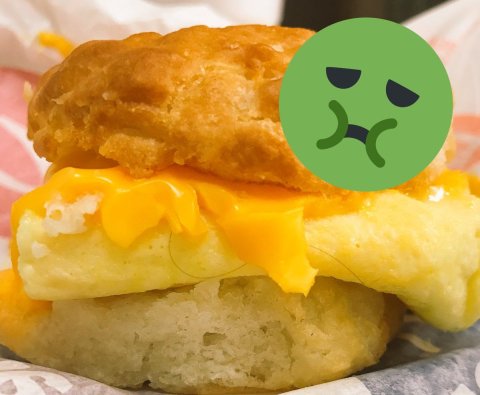In the bursting septic tank that is social media, amid the flow of hoax news and hate speech from accounts with anime avatars and alarming reports of our country's bleak descent into an autocratic kleptocracy, there's not much left to enjoy. Still, it retains at least one entertaining utility: as a corporate complaints department. Not because it offers brands a chance to help their grimy customers (who cares?), but because it offers a bountiful public display of corporate screwups.
A decade ago, if a hair had been baked into a pizza at a Domino's franchise in Bangor, Maine, the customer might have complained to the manager, and the matter would have been quietly resolved—refunds and coupons for free Cheesy Bread all around. Now that same customer will take a disgusting photo, post it and complain online for the whole world to enjoy.
See for yourself: Scroll through messages sent to any major brand and witness an endless stream of justified rage. Even better, type into the Twitter search bar "@dominos + nasty" and click the photo tab. Behold, a NSFW slideshow of gag-inducing failures of industrialized food: hairs and bugs and dog nails and dark brown Parmesan cheese allegedly from 1842. This search formula works for nearly every corporation. Swap out "nasty" for other adjectives, like "gross" or "sick," and a whole new set of photos appears.
The complaints come in distinct genres, some more amusing than others. Gripes about telecom and airline companies are typically boring variations of "My service isn't working" and "My flight was delayed" and "Why don't you all kill yourselves for inconveniencing me, an important person." There isn't anything surprising, though there are exceptions. A search for "@comcast + technician + bathroom" turned up a gem sent from user @TNiekowal in 2014: "You owe me $3.79 for a bottle of Febreeze [sic]…and your technician should be ashamed by what he just did to my bathroom. #seeadoctor." The company never responded, and it's unclear if said technician ever sought medical help.
The more interesting kind of complaints are those directed at fast-food and chain retail companies, because they often come with alarming photographic evidence. While an internet connection outage can't be photographed, morbid discoveries in food are appallingly easy to snap. Perhaps because of the visceral disgust the photos can trigger, food horror is a reliable form of clickbait. Two recent examples: In 2015, a woman found what may have been a tongue-eating parasite in a can of tuna, and later that year a man almost munched into a Subway sandwich that had a dead mouse as a topping. Eat fresh!
@SUBWAY Had excellent service today, but found a bone or tooth in my footlong sub??#Nasty pic.twitter.com/DzBRSkbmiV
— Aaron White (@AaronWhiteTV) June 28, 2016
That Twitter and Facebook became massive databases of PR disasters is sort of accidental, the confluence of a few factors. Since the platforms are fundamentally advertising services, they naturally attract brands. They're also designed for both the venting of petty grievances and shallow engagement with other users (including those aforementioned brands). Plus, shouting at a brand on social media—where people are spending all their time anyway—is easier than navigating through a phone tree maze to argue with a flustered agent who has no power to fix anything.

This results in a lot of complaints. There were about 5 million tweets directed at major brands per month in 2015, according to a 122-page guide published by Twitter to help companies better handle customer service issues. How many of those are complaints is difficult to say, but there are enough that companies have invested heavily in bolstering their social media customer service teams. Time Warner Cable tripled its support staff in 2015.
It's a system that's easy to mess with. In 2013, someone registered the Twitter account @UnitedAirlanes. Misspelled complaints meant for United Airlines poured in. "God has given me a great, beautiful funnel through which angry people flow in the worst possible mood," the pseudo-anonymous person running the account wrote on Tumblr. The person used this newfound power to mock those angry people. To a customer annoyed that her airline miles could buy her only worthless DVDs, the account responded, "United Airlanes reminds you that DVDs are as sharp as they are archaic, and that cutting tools will be valuable on the island."
.@stepharoozoo United Airlanes reminds you that DVDs are as sharp as they are archaic, and that cutting tools will be valuable on the island
— Untitled Airlanes (@untitledairlane) July 31, 2013
Perhaps the best complaint tweets are those directed at Supercuts. To demonstrate their botched haircuts, customers are forced to take selfies. Here we can view overly ambitious buzzcuts and disturbing patches of naked flesh and bang trims so severe they'd offend even a German expressionist painter. Each image—taken quickly inside midsized sedans and strikingly drab suburban homes—features the same expression of wry disappointment. Rather than gazing outward at the perverse failings of mass production, these complaints instead gaze back at the complainee. We get to see their reactions, along with the haircuts that are far from super. Many offer a sarcastic "Thanks, Supercuts."
Don't ever go to @Supercuts for a "trim" pic.twitter.com/BebbkLhmjH
— Dylan Wray (@dwray244) September 16, 2016
Beyond the superficial entertainment of laughing at gross photos and bad haircuts, there's something more significant here. These small moments of public revulsion exist within the same feeds that brands use to push their carefully calibrated, cynically optimistic identities to the world. This juxtaposition undermines their advertising and comes across as gleeful agitprop.
@mnMatthewScott Hi Matthew. Very sorry to hear you're unhappy with your services. Contact us at departmentcs@regiscorp.com so we can help.
— Supercuts (@Supercuts) September 14, 2013
Unfortunately for the person posting these, it isn't clear what, if anything, is accomplished; they seem to humiliate all parties involved. Maybe that is the point? It's mutually assured destruction: If I must endure a bowl of pasta alla roach or a haircut that makes it look like my head was shoved into a wood chipper, they might reason, then I can at least force some social media marketing intern from Villanova to share some of that pain. The public shaming might also force a response from a real person at the company for an issue that'd otherwise be ignored—assuming the account isn't run by bots. Or perhaps this gives those complaining too much credit. It's likely just rash impulsiveness, tweets sent in moments of sound and fury, signifying nothing (this might also account for the many spelling errors).
They aren't totally futile, because they provide the rest of us with cheap entertainment. And for that, let's say this earnestly, for once: Thanks, Supercuts.























